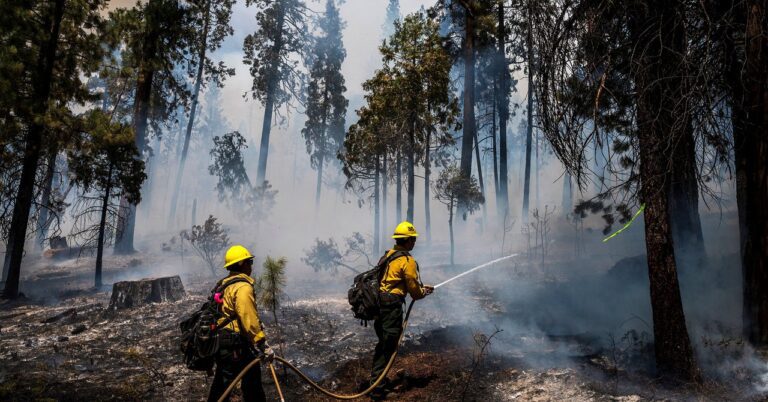
[ad_1]
According to Blom, whose group favors thinning dense stands of young trees and reducing accumulations of vegetation and woody debris from the forest floor through prescribed burns or mechanical methods, there are about 26,000 acres of land to be cleared in all 80 sequoia groves on federal land, with some 8,000 acres already treated.
On their reservation, the Tule River Indian Tribe has been managing eight sequoia groves for 40 years. McDarment believes those efforts limited tree damage when the recent wildfires swept through. The tribe is planning to reintroduce beavers next spring; their dams will help keep more water in the meadows near the groves.
Meanwhile, foresters are studying the best way to add trees to already burned areas. Researchers have established seedling plots to study which genomes, from sequoias as well as other conifers, will survive the best in anticipated future conditions. “We’ll check those over time and see which ones grow well,” said Joanna Nelson, director of science and conservation planning at the Save the Redwoods League.
Earlier this year, US lawmakers introduced a bipartisan bill called Save Our Sequoias that would provide additional funding for sequoia thinning. The bill received support from forest products, ranch, farm, and recreation groups. But a coalition of 80 environmental groups opposed the bill, in a letter to members of Congress, saying it would set a nationwide precedent that allowed federal agencies, under the guise of an “emergency,” to waive the environmental reviews required by the National Environmental Policy Act, the Endangered Species Act, and other environmental laws.
Without those reviews, and community and scientific input, the group said, the bill would “lead to rushed and poorly planned projects with major impacts on soil, streams, and wildlife that would result in increased wildfire risk.” No hearings have been held; the bill remains in limbo as the Forest Service and National Park Service continue to thin.
But not without pushback. In 2022, the Earth Island Institute sued the National Park Service to stop thinning activities in Yosemite National Park, claiming the agency had short-circuited environmental review. And in September, Wilderness Watch, the Tule River Conservancy, and the Sequoia ForestKeeper filed suit against mechanized logging in Sequoia and Kings Canyon National Parks, claiming it violated the Wilderness Act.
The debate is sure to intensify as the Biden administration has committed $50 billion over 10 years to reduce fuel loads on 50 million acres in 11 Western states.
But advocates say action is urgently needed. “These forests we care deeply about could be converted to shrubland with repeated high-severity fires of the kind we are seeing,” said Nelson, of the Save the Redwoods League, citing a recent study that evaluated dry conifer forests of the western United States. “We know what we need to do in responding to climate disruption, and we need to do everything we know how to do. We need limits on greenhouse gas emissions, and we also need active management to have giant sequoias around.”
[ad_2]